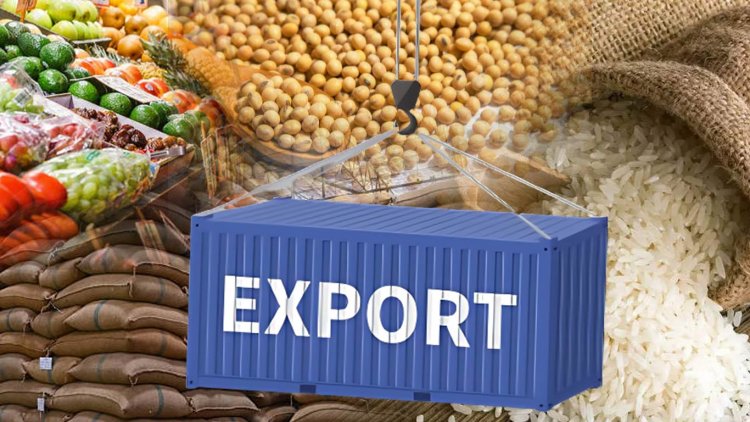Tags
Avoiding populism and panic to stabilise world rice markets
Author: Editorial Board, ANU
India’s recent rice export ban has set the bulls running in global food markets. In Asia, rice prices on futures markets have reached highs not seen since the global food crisis of 2008. The export ban comes at an already difficult time: the revocation of the Black Sea grain deal has already constricted supply, and adverse weather conditions have led to floods in China and El Niño conditions in major food exporters like Brazil and Australia. The non-functioning WTO’s dispute settlement mechanism is also in part responsible for ‘anything goes’ trade policies today, including rising food protectionism.

India’s export ban in 2008 contributed significantly to the global food crisis fifteen years ago, and the country’s importance in world rice markets has only grown since then. In September last year, it banned the export of broken rice, causing difficulties in many poorer rice-importing countries, particularly in Africa, which rely on Indian supplies.
The reasons for the latest intervention are complicated, but it’s difficult to deny that the prospect of general elections in 2024 – at which the incumbent Modi administration is a solid, though not prohibitive favourite – weighed in favour of measures that will tame domestic inflation at the cost of economic turmoil elsewhere in Asia. Less heralded is that by granting bilateral exemptions to the export ban, New Delhi can generate diplomatic goodwill in selected trade partners, as was the case for Senegal and Gambia which, around the earlier bans, obtained permission to import Indian broken rice.
India is of course not just the catalyst for recent difficulties in the global grain market: it is also the host of the G20 this year. At last year’s summit, the Chair, Indonesia, pulled off an impressive feat of economic diplomacy given the circumstances surrounding the summit by getting leaders to agree on a consensus statement including food security. During its presidency, Indonesia lifted export restrictions on palm oil it had put in place earlier in the year. It remains to be seen whether the New Delhi summit will be able to produce any kind of consensus on calming global food markets.
Managing food crises often boils down to a simple task: avoiding self-fulfilling prophecies. When people — and governments — predict shortages, they hoard, thereby creating the market scarcity they are trying to insure against. A set of decisions that seems perfectly rational on an individual or even country-level can produce an outcome that is far from optimal from the perspective of social welfare — a classic prisoner’s dilemma outcome. Just as with the toilet paper crisis in some countries in the early days of the COVID-19 pandemic, the key is to nip this in the bud early by managing perception and assuring consumers that supply is enough to meet demand at a reasonable price. As Franklin Roosevelt might have put it, the only thing to panic about is panic itself.
In international food markets, often what is needed is for a single government to signal market confidence in order to head off hoarding importers. In 2008, this role was played by Japan, which announced it would send the Philippines a portion of its so-called ‘WTO’ rice stocks (imported due to minimum market access provisions but left in warehouses to protect local production). Japan’s move calmed rice markets and averted a more profound crisis.
In this week’s lead article, Peter Timmer explains that three countries in Asia will play pivotal roles. Indonesia, currently entering a longer dry season due to El Niño, is contracted to buy 1 million tonnes of rice from India and it is still unclear whether that order will be met, at least in full. Indonesia’s response to any shortage in its import program will have a major impact on the world price. Were India to pledge to meet the commitment in full, it would do much to calm markets.
The Philippines and Vietnam are worth watching closely too; the former because of its status as the second-largest rice importer in the world after China and the latter because its relatively good harvests this year will plug some of the gap left by India (with its farmers enjoying considerably higher profits thanks to higher prices). Should the Philippines turn out to require more rice than expected, or Vietnam begin to worry about its own food security and impose trade restrictions, then things could get worse.
Overall, despite the major challenges set in motion by India’s protectionist move, the situation does not yet look anywhere near as destabilising as it was in 2008. As Timmer concludes, ‘the big question though is whether the price rise will be gradual — giving consumers time to adjust without panic — or whether there will be a rapid spike. The fact that there has been little panic since India’s announcement in July gives hope that the increase in rice prices will be gradual and contained’.
The rapid post-COVID inflation episode is beginning to recede in many countries. It would be a pity to squander the painfully-acquired gains from tighter monetary policy with a bout of damaging food inflation. A coordinated response must focus on keeping rice markets open and avoiding panicked hoarding.
The EAF Editorial Board is located in the Crawford School of Public Policy, College of Asia and the Pacific, The Australian National University.
https://www.eastasiaforum.org/2023/08/21/avoiding-populism-and-panic-to-stabilise-world-rice-markets/Published Date: August 21, 2023







